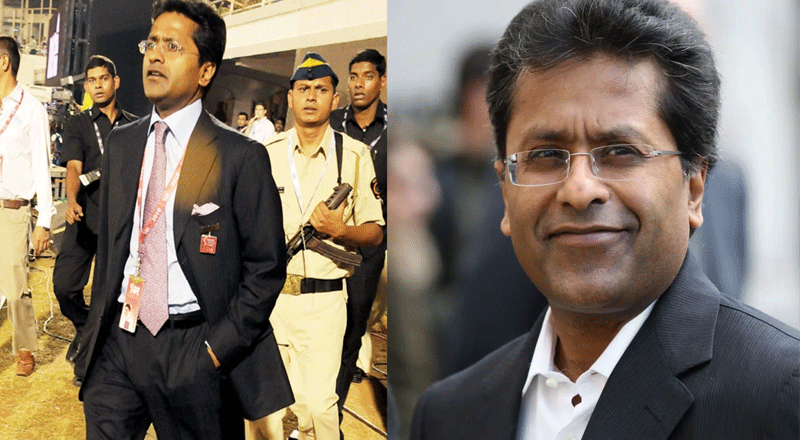The Rise of Cyber Fraud and Digital Scams
As digitalization expands, so do the opportunities for cybercriminals to devise increasingly sophisticated scams. The concept of a ‘digital arrest’—a completely fraudulent tactic—has recently emerged as a method to dupe unsuspecting victims. The scammers convince individuals that they are under legal surveillance and cannot contact anyone until they comply with specific demands. Senior citizens and individuals less familiar with advanced technology often fall prey to such scams. Cybercrime has become a serious concern globally, and in India, these schemes are growing in complexity. One of the most high-profile recent cases is that of SP Oswal, chairman and managing director of Vardhman Group, who was duped into transferring ₹7 crore to fraudsters impersonating high-ranking officials, including the Chief Justice of India.
The Elaborate Fraud: How it All Started
The scheme began on a typical day for 82-year-old industrialist SP Oswal when he received a seemingly innocuous call on August 28, 2024. Oswal was informed that his phone would be disconnected unless he pressed ‘9.’ Believing this to be a routine inquiry, he complied, and the person on the other end claimed to be from the Central Bureau of Investigation (CBI), Colaba office. They presented alarming information—Oswal’s personal documents had allegedly been used to open an account with Canara Bank, which was now under investigation for financial irregularities linked to a high-profile case against Naresh Goyal, the former chairman of Jet Airways.
The ‘Naresh Goyal Link’ and False Accusations
The fraudsters convinced Oswal that his Aadhaar and other personal identification details had been used to open a fraudulent account. They implied that this account had financial ties to the money laundering investigation surrounding Naresh Goyal. Despite Oswal’s repeated insistence that he had no connections with such an account or Goyal, the scammers continued their ruse. The industrialist was further pressured when they explained that his details might have been misused due to his past association with Jet Airways as a passenger.
Oswal was told that until their investigation concluded, he was considered a suspect in the case. This is when the concept of a ‘digital arrest’ was introduced, leading Oswal to believe that he was under constant surveillance, with his movements being monitored remotely.
The ‘Digital Arrest’ Hoax: Round-the-Clock Surveillance
The scammers’ manipulation escalated when a man named Rahul Gupta, impersonating a chief investigating officer, appeared on a video call. Gupta presented official-looking documents and rules, stating that Oswal was now under ‘digital custody’ until the investigation was complete. Oswal was even instructed to write a letter requesting a priority investigation, further immersing him in the fictitious legal scenario.
During the video calls, the fraudsters claimed to be constantly monitoring him. Oswal had to inform them every time he left his room and carry his phone to allow them to “supervise” his movements. They continued to instill fear by saying he could not discuss the situation with anyone, as the case fell under the National Secrets Act, and violating the terms could lead to a prison sentence for him or anyone he confided in.
Impersonation of Chief Justice and Fake Courtroom Setup
The fraudsters’ manipulation reached its peak when they staged a fake courtroom setup during a video call. A man posing as Chief Justice of India DY Chandrachud appeared on the call and addressed the matter as if it were an ongoing legal case. The scammers even sent Oswal a fabricated Supreme Court order via WhatsApp, complete with what appeared to be official emblems, stamps, and barcodes, mimicking legitimate court documentation. Overwhelmed and convinced by the elaborate setup, Oswal followed the instructions and transferred ₹7 crore into several accounts.
These documents bore a striking resemblance to actual government and court papers, even including revenue stamps, Supreme Court logos, and barcodes. A fake arrest warrant bearing the Enforcement Directorate (ED) logo and Mumbai Police stamps added another layer of authenticity to the scam. This level of detail was enough to completely deceive Oswal, who felt trapped by the legal language and procedures.
The Aftermath: Police Action and Recovery
The fraud came to light on August 31, when Oswal finally realized he had been duped and lodged a complaint with the police. Acting swiftly, the authorities were able to freeze several of the bank accounts where the transferred money had been deposited, recovering ₹5.25 crore—one of the largest recoveries in such a case in India’s history.
The investigation revealed that an inter-state gang, led by former bank employee Rumi Kalita, was behind the crime. Two gang members, Atanu Chowdhury and Anand Kumar, small traders from Assam, were arrested in connection with the case. Kumar confessed that he had been promised a share of the funds in exchange for allowing his bank account to be used for the fraudulent transfers. The gang had informed him that his account would be used for “gaming prize funds,” and he was shocked when ₹9.2 crore was funnelled through his account instead of the agreed-upon ₹2 crore.
The police are now on the hunt for other gang members, including Nimmi Bhattacharya, Alok Rangi, Gulam Murtaza, and Zakir, believed to have orchestrated the complex fraud.
What is ‘Digital Arrest’?
A ‘digital arrest’ is a form of cyber fraud where scammers claim that the victim is under virtual surveillance or custody as part of a legal investigation. Victims are led to believe they are constantly being monitored through digital means, usually via video calls, and are coerced into transferring money under the guise of complying with legal procedures. Police and cybersecurity experts have repeatedly issued warnings that there is no such thing as a ‘digital arrest’ in any legal framework, yet such scams continue to thrive.
The Need for Greater Awareness
This case highlights the growing sophistication of cyber fraud in India, where even prominent individuals like SP Oswal are not immune. The concept of ‘digital arrest’ is a frightening new development that exploits fear and confusion, particularly among senior citizens unfamiliar with advanced digital technologies. As cybercrime evolves, it is crucial for the public to stay informed about the tactics used by fraudsters and for authorities to continue spreading awareness about such scams. The swift action of the police in recovering the majority of the stolen funds in this case is commendable, but it also underscores the need for stronger cybersecurity measures and public vigilance to prevent such incidents in the future.
(With inputs from agencies)





